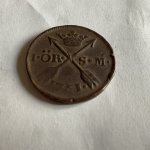Johncoho
Silver Member
- Feb 14, 2014
- 2,854
- 7,264
- 🏆 Honorable Mentions:
- 2
- Detector(s) used
-
Whites Spectrum XLT, Garrett AT Pro, Macro pinpointer, Garrett carrot pinpointer,
Lesch digger, Nel Tornado coil for ATPro, Garret ATMax with Nel Tornado coil
- Primary Interest:
- All Treasure Hunting
We had an outing for our metal detecting club on Saturday at an old Army camp in the desert between Yuma and Gila Bend, Arizona that had been used to train troops in WW2 for fighting in North Africa against Hitler's Nazi's. A number of our group found some coins and other artifacts during the hunt. It was quite interesting and I was able to find a 1930 Wheat penny, a 1941s Mercury dime, and several military items from that time in the early 1940's. I found a stripper clip of unfired blanks for an M1903 rifle, 2 shirt buttons marked USA, the end of a cleaning rod for an M1903, and the end of an old tube of shaving lather. There was no pull tabs or modern junk, but old cans, bottle caps, and double edge razor blades were there in abundance. All that remains of the camps are stones that are laid out where the tents and walkways would have been. There was no modern coins found, only coins from 1944 and earlier. These covered a really large area in the desert.
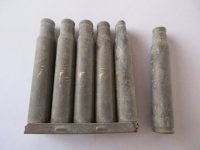
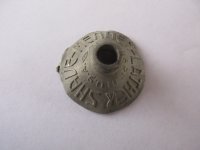
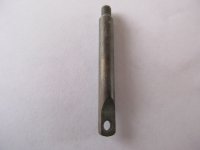
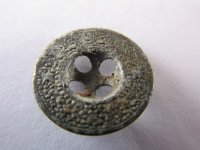
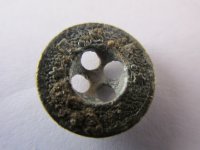
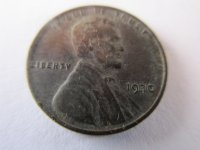
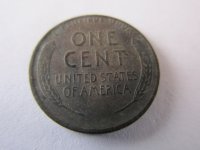
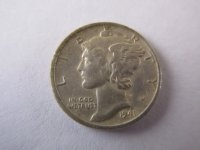
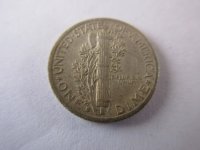 It was an interesting hunt and we really enjoyed it. Below is a description about the training camps and some history about them.
It was an interesting hunt and we really enjoyed it. Below is a description about the training camps and some history about them.
The Desert Training Center (DTC), also known as California-Arizona Maneuver Area (CAMA), was a World War II training facility established in the Mojave Desert and Sonoran Desert, largely in Southern California and Western Arizona in 1942.
Its mission was to train United States Army and Army Air Corps units and personnel to live and fight in the desert, to test and develop suitable equipment, and to develop tactical doctrines, techniques and training methods.
It was a key training facility for units engaged in combat during the 1942–1943 North African campaign. It stretched from the outskirts of Pomona, California eastward to within 50 miles of Phoenix, Arizona, southward to the suburbs of Yuma, Arizona and northward into the southern tip of Nevada.
This simulated theater of operation was the largest military training ground in the history of military maneuvers. A site near Shavers Summit (now known as Chiriaco Summit) between Indio and Desert Center, was selected as the headquarters of the DTC. The site, called Camp Young, was the world's largest army post.
Major General George S. Patton Jr. came to Camp Young as the first commanding general of the DTC. As a native of southern California, Patton knew the area well from his youth and from having participated in army maneuvers in the Mojave Desert in the 1930s. His first orders were to select other areas within the desert that would be suitable for the large-scale maneuvers necessary to prepare American soldiers for combat against the German Afrika Korps in the North African desert.
Patton and his advanced team designated various locations within the area where tent camps would be built. The camps were situated so that each unit could train individually without interfering with the other. Airfields, hospitals, supply depots and sites for other support services were selected as was a corps maneuvering area. The plan was that each division and or major unit would train in its own area, and near the end of its training period would participate in a corps (two divisions or more) exercise in the corps maneuvering area at Palen Pass. Upon completion of the corps exercise, the trained units would leave the DTC, and new units would arrive to begin their training and the process repeated.
By March 1943, the North African campaign was in its final stages and the primary mission of the DTC had changed. By the middle of 1943, the troops who originally came for desert training maneuvers, were now deployed worldwide. Therefore, to reflect that change in mission, the name of the center was changed to the California-Arizona Maneuver Area (C-AMA or CAMA). The CAMA was to serve as a theater of operations to train combat troops, service units and staffs under conditions similar to those which might be encountered overseas. The CAMA was enlarged to include both a communications zone and combat zone, approximately 350 miles wide and 250 miles long.








 It was an interesting hunt and we really enjoyed it. Below is a description about the training camps and some history about them.
It was an interesting hunt and we really enjoyed it. Below is a description about the training camps and some history about them.The Desert Training Center (DTC), also known as California-Arizona Maneuver Area (CAMA), was a World War II training facility established in the Mojave Desert and Sonoran Desert, largely in Southern California and Western Arizona in 1942.
Its mission was to train United States Army and Army Air Corps units and personnel to live and fight in the desert, to test and develop suitable equipment, and to develop tactical doctrines, techniques and training methods.
It was a key training facility for units engaged in combat during the 1942–1943 North African campaign. It stretched from the outskirts of Pomona, California eastward to within 50 miles of Phoenix, Arizona, southward to the suburbs of Yuma, Arizona and northward into the southern tip of Nevada.
This simulated theater of operation was the largest military training ground in the history of military maneuvers. A site near Shavers Summit (now known as Chiriaco Summit) between Indio and Desert Center, was selected as the headquarters of the DTC. The site, called Camp Young, was the world's largest army post.
Major General George S. Patton Jr. came to Camp Young as the first commanding general of the DTC. As a native of southern California, Patton knew the area well from his youth and from having participated in army maneuvers in the Mojave Desert in the 1930s. His first orders were to select other areas within the desert that would be suitable for the large-scale maneuvers necessary to prepare American soldiers for combat against the German Afrika Korps in the North African desert.
Patton and his advanced team designated various locations within the area where tent camps would be built. The camps were situated so that each unit could train individually without interfering with the other. Airfields, hospitals, supply depots and sites for other support services were selected as was a corps maneuvering area. The plan was that each division and or major unit would train in its own area, and near the end of its training period would participate in a corps (two divisions or more) exercise in the corps maneuvering area at Palen Pass. Upon completion of the corps exercise, the trained units would leave the DTC, and new units would arrive to begin their training and the process repeated.
By March 1943, the North African campaign was in its final stages and the primary mission of the DTC had changed. By the middle of 1943, the troops who originally came for desert training maneuvers, were now deployed worldwide. Therefore, to reflect that change in mission, the name of the center was changed to the California-Arizona Maneuver Area (C-AMA or CAMA). The CAMA was to serve as a theater of operations to train combat troops, service units and staffs under conditions similar to those which might be encountered overseas. The CAMA was enlarged to include both a communications zone and combat zone, approximately 350 miles wide and 250 miles long.
Upvote
16






